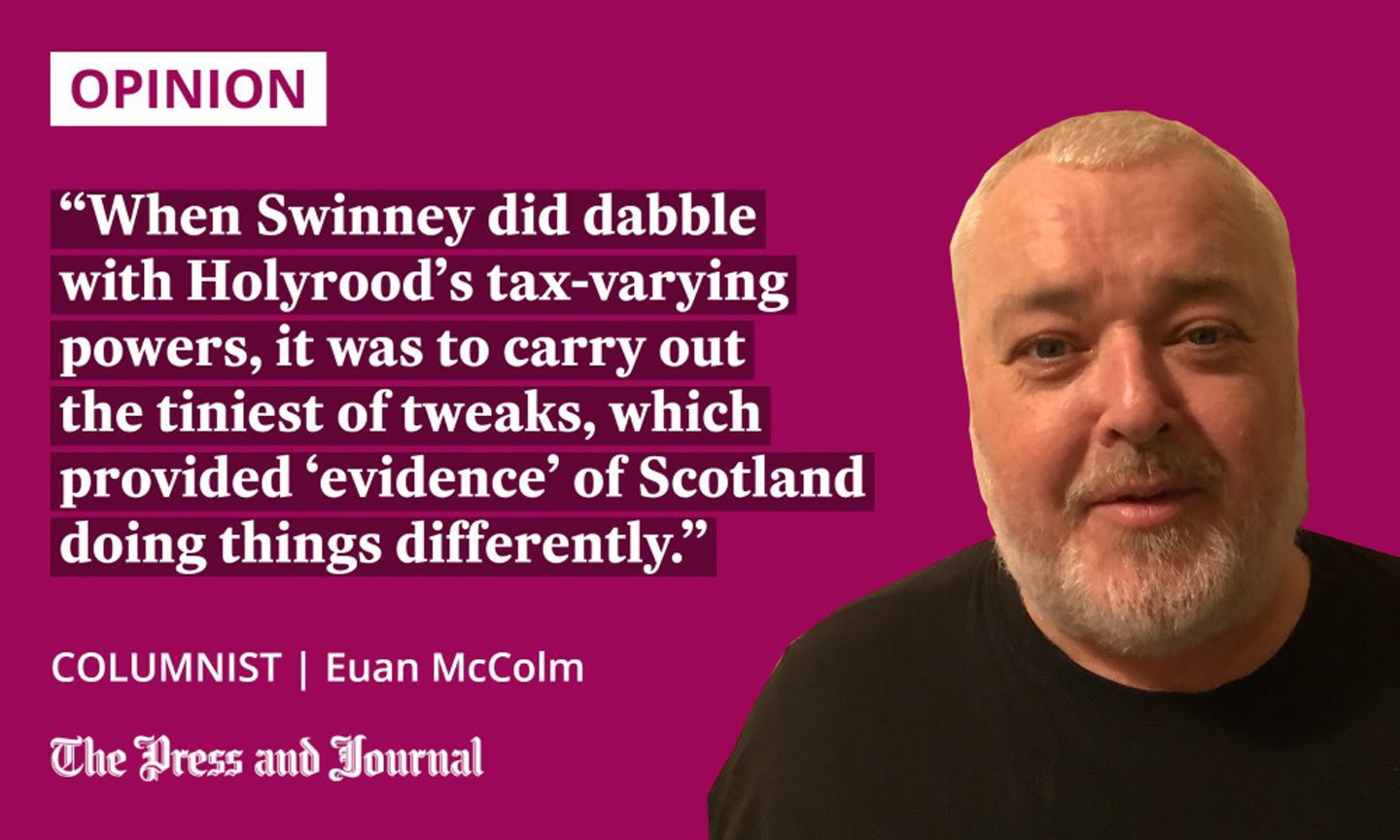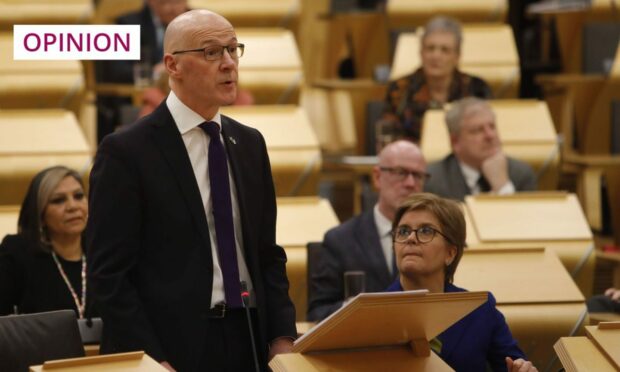In nine years as finance secretary, John Swinney acted conservatively at all times, and he hasn’t changed his tune, writes Euan McColm.
John Swinney is a living contradiction of the widely-held belief that the SNP is a radical political force.
The nationalists have long tickled the tummies of Scottish exceptionalists; the ones who hold dear the notion that those of us living north of the border are uniquely compassionate and wise. But, in nine years as finance secretary, Swinney acted conservatively at all times.
When he did dabble with Holyrood’s tax-varying powers, it was to carry out the tiniest of tweaks, which provided “evidence” of Scotland doing things differently, without being so far from the strategies of UK Government as to scare the horses.

Back in his old job, while current finance secretary Kate Forbes is on maternity leave, Swinney today announced budget plans which demonstrated that he remains a most cautious politician.
His statement – delayed for three quarters of an hour by Presiding Officer Alison Johnstone, while she sought answers on how so much of its content had been briefed to the BBC before Swinney addressed MSPs – wasn’t exactly packed with revolutionary ideas.
Mandatory attack on Westminster was made
An extra penny on the higher and top rates of income tax certainly makes Scotland the highest-taxed part of the United Kingdom, but nobody is going, as the old saying goes, to be squeezed until the pips squeak.
Of course, it is necessary for any SNP MSP when addressing the Holyrood chamber to begin by attacking the government at Westminster, and so it was with Swinney. First things first – Brexit had made things more difficult all round.
John Swinney confirms the £20M independence referendum fund will now be reallocated to mitigate the cost of living crisis. pic.twitter.com/BqHNaxLEDK
— Phantom Power (@PhantomPower14) December 15, 2022
Many across the chamber – including in the Conservative group – agree with this analysis. They also agreed departure from the EU would be unnecessarily damaging back in 2014, when it would have happened to Scotland, had the SNP led the Yes campaign to victory in the independence referendum.
In Swinney’s world, leaving the EU under a Tory government is a bad thing, but leaving it in the name of Scottish independence would have been good. Got that?
Fuel insecurity fund is a good move
One of the more eye-catching parts of his statement was the announcement that £20 million set aside to prepare for a referendum which (after the Supreme Court ruled Holyrood had no authority to stage it) will not take place next October will now be invested in a fuel insecurity fund.
This was undoubtedly a smart decision, although cynics might feel this money could have been so used long ago, rather than being ringfenced for a vote that even the Scottish Government’s own lawyers doubted would ever take place.
Swinney insisted that his plans showed the SNP had rejected the path of austerity
With what passes for a rhetorical flourish from the rather sombre deputy first minister, Swinney insisted that his plans showed the SNP had rejected the path of austerity.
Those who prefer the impact of devastating public service cuts and eye-watering tax rises will have to wait until a majority of Scots, if they ever do, vote for independence.
Euan McColm is a regular columnist for various Scottish newspapers











Conversation